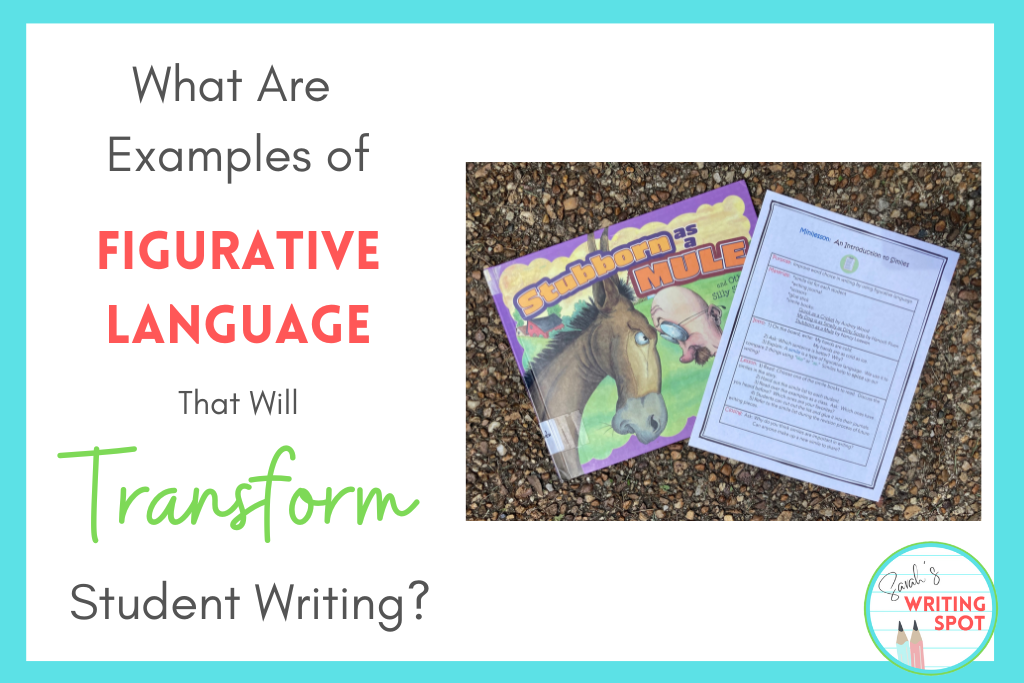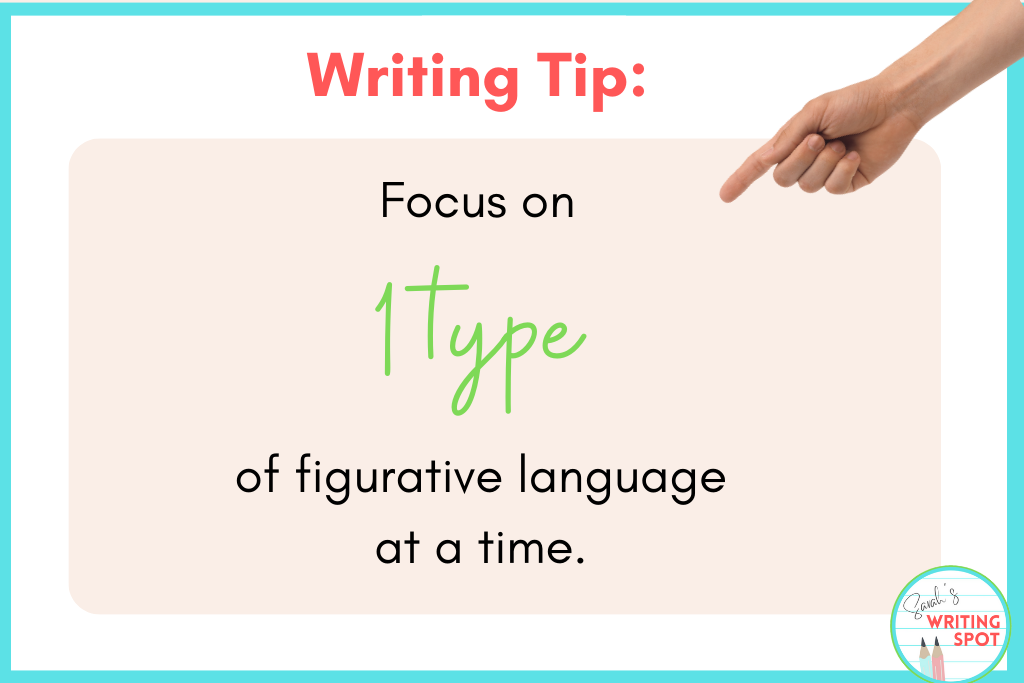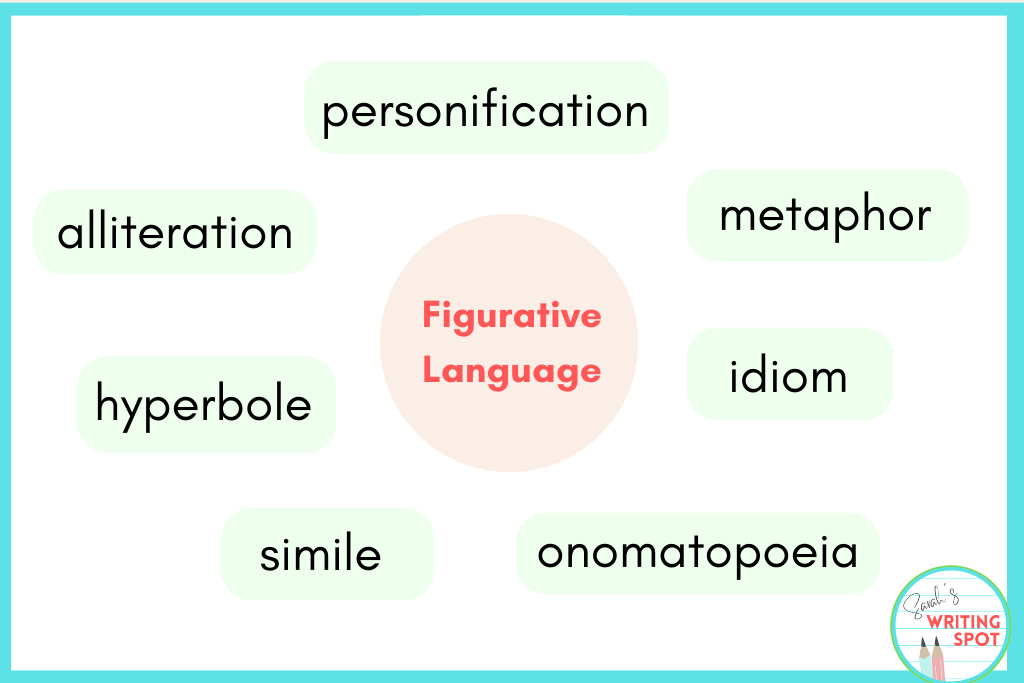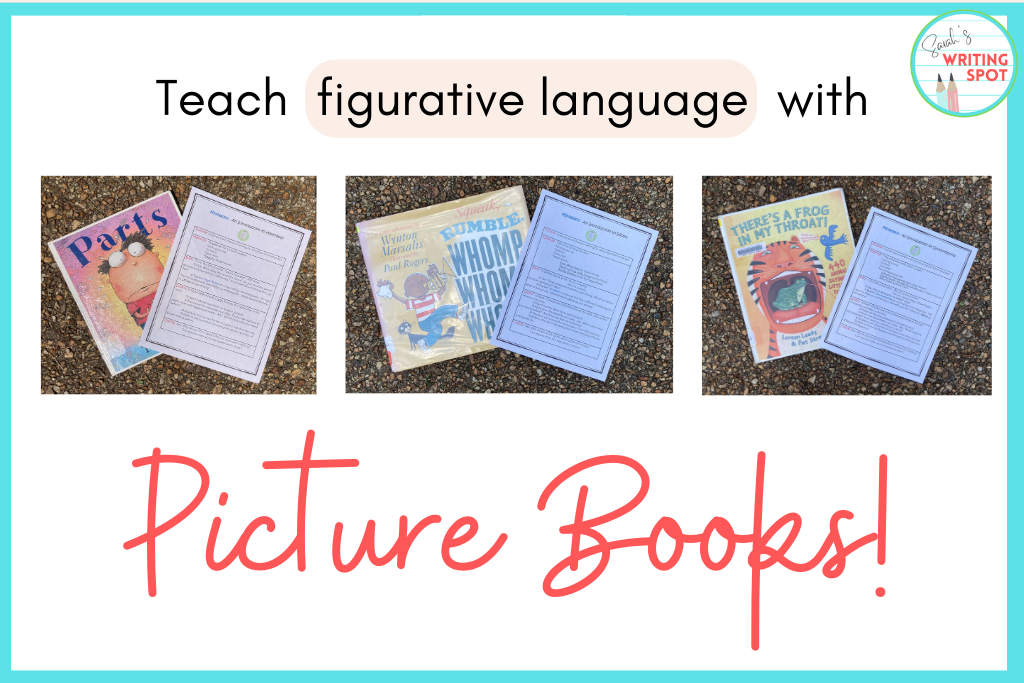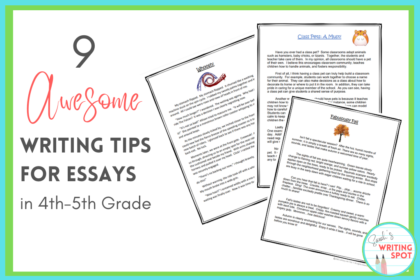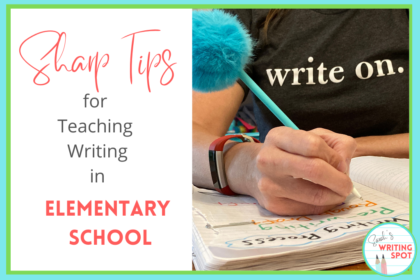What are the examples of figurative language that will transform student writing? How can students play with words to make their writing sing? Both are great questions. And both answers can be a powerful tool to help students find a unique “voice” when composing.
Before we unpack the details, however, how would you like to get simple writing tips and tricks like these each month? No need to spend time scrolling Google for funny writing prompts or essay writing templates– you’ll simply have tips waiting for you in your inbox! Sound awesome? Click HERE to join my amazing elementary educators’ writing community!
Dry. That’s the word that came to mind as I looked over my students’ writing. Boring. Plain. Blah. And who was to blame? Me.
As a teacher, I knew it was my job to bring out a personality in my students’ work. But clearly, that wasn’t happenin’. I always admired the student writing pieces I saw on the teacher’s bulletin board in the hallway across from me. Why was her students’ work so impressive? What was I missing?
Figurative language. I’d been working so hard to ensure my students knew the basic format of writing that I’d neglected to focus on what made it actually interesting to read. What gave it some Pep! Zing! Zest!
But how, exactly, was I supposed to TEACH figurative language? And was it too complex for elementary school students to learn?
Read on to see what I discovered…
Teaching Figurative Language to Elementary Students
Not only is teaching figurative language to elementary students not too complex for them but it can actually be fun! Most students LOVE learning unusual ways to express themselves. It gives them pride in their work. It gives them something to show off to others!
However, using figurative language isn’t something that comes naturally for most kiddos. The majority of them don’t just add flourishes of figurative language as they’re drafting. They’re concentrating too hard on getting the basic structure of a paragraph or essay down!
So, how DO you teach figurative language?
Start by bringing it up during the revision process:
- Discuss how “revising” means to make your writing better. All great writers revise!
- Focus on 1 type of figurative language at a time. For example, teach what a simile is and show examples in literature.
- Create a list of that type of figurative language with your students to post in your learning space or add to a writing journal.
- Model adding that type of figurative language to your own rough draft. “Think aloud” so students can better understand the process.
- Encourage students to revise their own work by adding a few types of figurative language.
By teaching figurative language authentically during the Writing Process, students are more likely to retain this super-cool skill and use it in the future!
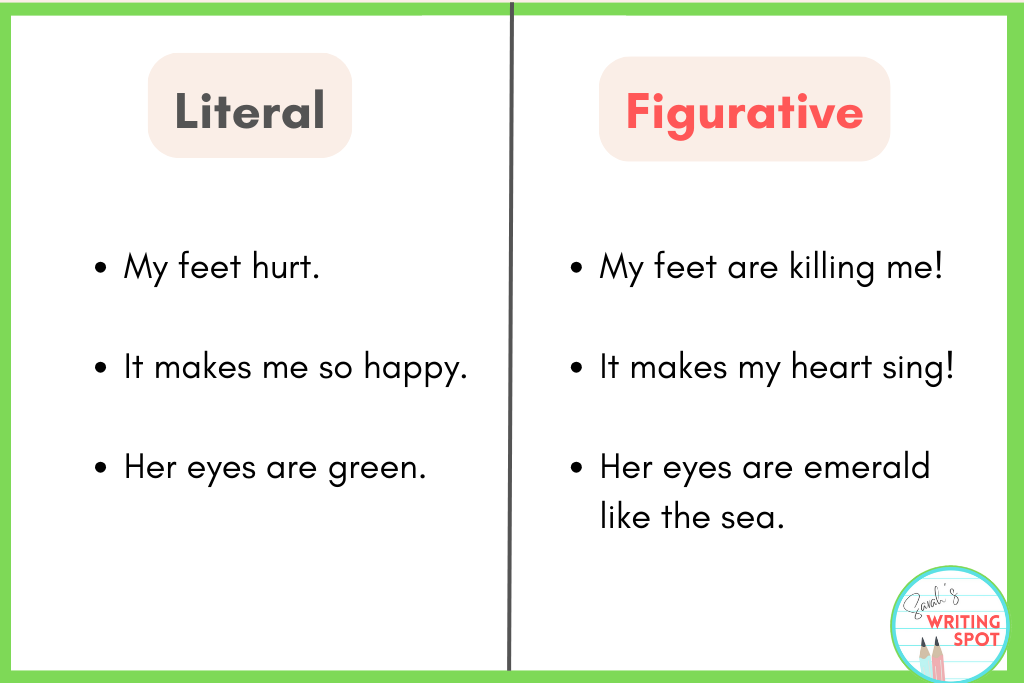
Figurative Language Definition for Students
What can you provide as a figurative language definition for students? I usually like to begin with a discussion between literal versus figurative language.
Start by writing 2 sentences on the board such as these:
The salsa was spicy.
The salsa was like a volcano in my mouth!
Ask your students: “Which one is real, or literal?”
Then ask: “What about the other one? Can you really have a volcano in your mouth? If not, then why would someone write it that way?”
Have a discussion about how figurative language is like a playground for words. (See what I did there?) It’s a way to connect with your reader in a deeper and more creative way.
Make a chart with your students by creating examples of literal versus figurative language. By comparing their differences, they’ll be able to form a deeper understanding of these terms.
Figurative Language Examples You Can Start Using Now
Looking for a few figurative language examples to get you started? Let’s begin with the basics.
There are 7 main types of figurative language that I like to teach. These are the ones that are included in most curriculums:
- Similes– using like or as to compare 2 things (ex. They are like two peas in a pod.)
- Metaphor– using is, are, was, or were to compare 2 things (ex. His room is a pigsty!)
- Onomatopoeia– using sounds (ex. Bam! He hit the ball out of the park!)
- Personification– giving human characteristics to non-human objects (ex. The sun was smiling down on me.)
- Idiom– a word or phrase that has a different meaning than what is said (ex. It’s time to hit the hay.)
- Hyperbole– an exaggeration used to make a point (ex. My backpack weighs a ton!)
- Alliteration– words that are close together have the same beginning sound (ex. The winter wind whispered among the trees.)
While each one has its own style, each type of figurative language adds pizzazz to a piece of writing!
Books for Teaching Figurative Language
Using picture books for teaching figurative language is a strategy I use quite often. Picture books are quick to read and great for visual learners.
Here are a few YouTube videos with some of my favs!
You can also find lessons with tailored lists of books for teaching figurative language in this bundle from my TpT store. Lesson plans and example charts are included, as well!
Closing Thoughts
Now that “What are the examples of figurative language?” has been answered, it’s time to get to the library! It’s time to grab a handful of figurative language books that will rock your next writing unit. Are you ready for your students to make some magic? Write on!
SARAH

Need help teaching figurative language? Try these lessons below!
*Teaching Figurative Language: Lesson Bundle
*Narrative Essay Example with 2-Week Unit
*Descriptive Essay Example with 2-Week Unit
*Quick, Easy, and Fun Alliteration Activity
